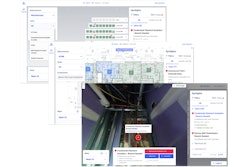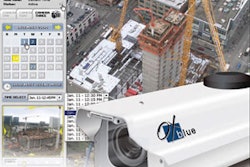Smooth and efficient collaboration of all parties involved in a construction project can be one of the most difficult parts of the job. With so many people, the flow of information is difficult to keep track of and the opportunity for discrepancies increases with every RFI, change order or communication exchange.
There is an established technology that may alleviate many of these problems in the form of a Central Project Management System (CPMS). Jon Antevy, CEO of e-Builder, explains that CPMS is a document management resource that stores the critical project files in a central location. The result is that no one person is in control of any document, file, etc. It is located in the CPMS and any changes made are identified by who made the change and when it was made. "This way users always know they are working with the most-recent documents," says Antevy.
Getting information into a central location allows for work to get done quicker and in a more organized manner. If the contractor has a question for the architect, he may have to forward that to several other people. If there is a change that results in more cost, the owner has to be brought into the conversation. If the contractor were to e-mail everyone, he would receive multiple responses that would need to be relayed to everyone else and there would be no logical flow of conversation. "By having one central location specifically for all correspondence, you can get speedier turn-around time," says Antevy.
One example is that users are able to mark up drawings or take photographs of an issue in the field. "The contractor would take a photo of something wrongly placed and put that information online," save Antevy. "He can redline and mark-up different areas of the drawing, and several people can look at it fast and then offer a solution." This way, the project moves forward with less of a delay.
In the mass back-and-forth interactions between all of the parties, when a disagreement does arise, it is difficult to specifically identify where the project went off track with a traditional model. With the use of a CPMS, everyone is kept up-to-date on the status of a project and those responsible for their portion of the project are kept to their commitments.
According to Antevy, accountability is most likely the No. 1 feature contractors value using a project management system. "The accountability side is the lion's share of why people incorporate these systems," says Antevy. Users are able to use reference CPMS to review who said what, when they said it, and what was and wasn't done. "When using a CPMS, contractors love getting calls from subs saying they didn't get something and then being able to show them exactly when they received it." This level of tracking detail is available for contractors using CPMS.
Not just correspondence is recorded in a CPMS, everything is tracked. Antevy refers to this as digital bread crumbs. The process and steps taken by the contractor are electronically recorded and a redline can be produced to fully disclose how and why certain actions were taken.
Commonly, when a contractor is in need of a redline to show that work was done according to plans, it is difficult to secure from another party. This leaves the contractor at risk as he is responsible for building the project according to plans. With a CPMS, contractors have records of and access to each step of the process and accountability falls on whoever is ultimately responsible. "If a job is slowed because a document delivered with plenty of head time and wasn't opened, it becomes a problem," explains Antevy. "CPMS will show that information and put the onus back on those not doing work.""
Communication of this nature would also reduce the number of visits to a jobsite as information can be shared in a central location as opposed to physically going to the jobsite. "When updates happen in these collaborative sites, everybody who needs to know gets notified via e-mail," explains Antevy. "I get information when I want it without having to ask. Then I can act upon it very quickly as opposed to having to wait while others are expecting a turnaround."
This instant accessibility to information is another feature many contractors may find to be of great value from this type of a project management system. Instead of a contractor being the main point of contact when inquires arise about a project, the CPMS houses all of the relevant information surrounding the project. Anyone can access the online resource at any time and gain instant access to the metrics in which they are interested. This significantly reduces the amount of information that needs to be asked for. Actions can also be taken much quicker as someone isn't sitting around waiting for a response.
Conclusion
Responsibility is brought to the forefront when using CPMS. Sole responsibility of housing and managing project information is relieved from the contractor allowing him to give more focus to daily tasks. CPMS also keep the responsibility on the individual to perform their requirements. Integration of a system like this may just be the most important tool you add to your business this year.



















